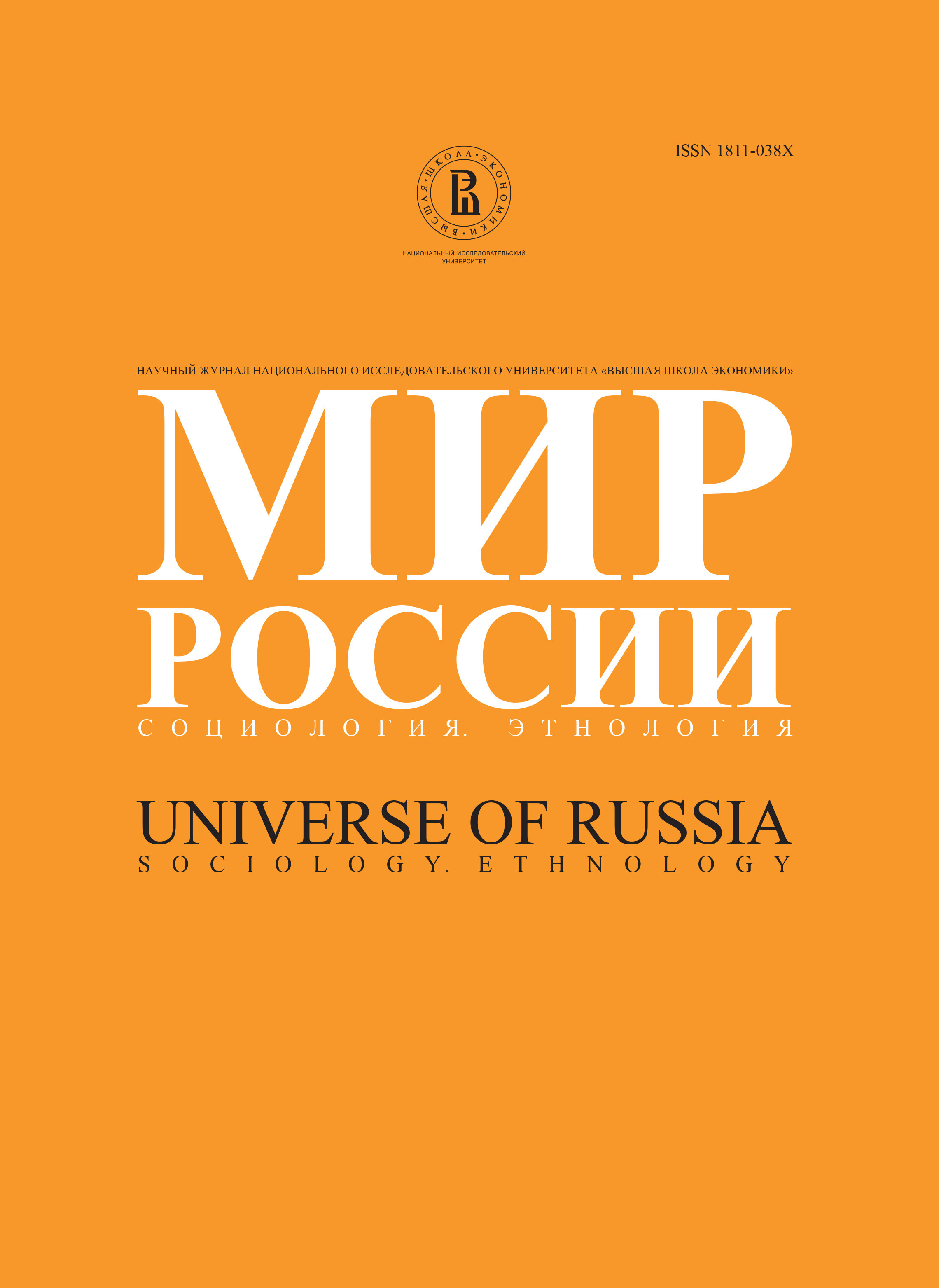Mass moods and social conflict
Abstract
The object of discussion in this study are mass moods which cause in the public feelings of anxiety and misgivings about looming local or global catastrophe, increasing worries and tenseness. The feeling of impending menace provoke more or less mass aggressive actions meant to relieve the social tension. The very state of social tenseness contains in itself what can be described as aggressive moods, intentions.Social tenseness is a characteristic of groups of people. Social tenseness can be understood as discontent with a situation, aggressive disposition, aggressive intentions that have not produced an action but are present in the minds of some groups of population in a form of laying blame on some other party (other group, organisation, institution) for their unsatisfactory condition. In this paper, on the one hand, social tenseness is attributed to the social situation or to a set of different sociions, to the state of the social system at large, or to its separate fragments. On the other hand, social tension is seen as a phenomenon stemming from psychological state and individual feelings of people who are the agents in the creation and maintenance of social tenseness. Such an approach has two specific features. For one thing, social tension is reflected in individual mind as discontent with something. For another, it is an event of a vector type, i.e. it is formed and exists within the of a certain social group or a set of groups and is directed toward some element of the social structure as the object incarnating in itself a hindrance on the road to satisfaction of a need, interest, goal etc. The presence of a need, attempts to satisfy it, the existence of an insurmountable hindrance to its satisfaction creates, according to definition accepted in psychology, a situation of frustration. Some individuals in this situation are found themselves not only in the objectively existin on of frustration but are also subjectively frustrated. One of the most common varieties of individual reaction to frustration are actions directed to remove the hindrance, i.e. aggression. This aggression can be applied both to the hindrance directly or to other objects individually perceived as the hindrance. It is logical to assume, that individuals exhibiting aggression in situations of frustration of a social origin are recruited from those who are able to demonstrate aggressive reaction in frustration situations too, i.e. either these are individuals with established aggressive reactions to frustration, or those who at least have no inner mechanisms checking such reactions. They make up as if a reserve from which to pour aggressiveness into certain social situations. The first step, therefore, is a conceptual definition of the state of psychic and social aggressiveness. It is obvious that many people either after a certain life experience, or due to their certain psychological state are overaggressive in such situations that are perceived by others as neutral. Other individuals begin to exhibit aggressiveness if there are necessary conditions, a specific provoking situation. Still others, even in the most complicated situations do not demonstrate aggressive moods.
The second step, therefore, will be search of methods for distinguishing persons disposed to aggressive reactions from all others. After identifying the group with aggressive reactions, it is necessary to decide if these reactions are social by their character and/or direction, if they are connected with the attributes of the social situation at micro and macro levels. Aggressiveness, clearly, can be non-specific, not directed to certain elements of the society, i.e. to be caused by other than so rances (for example, by flood, earthquake or other elemental calamity). The results of differently directed aggressive behaviour by one or more social groups and of a focused and organised aggressive action may turn out and , as a rule, do turn out quite different.
The public responds to the state of undefined excitement, rebellion and actions of groups formulating particular demands and undertaking aggressive actions for the achievement of these demands also in different ways. Under certain conditions, psychological frustration (generating aggressive behaviour) and social tenseness are correlates. On the one hand, the aggressive moods of a group of persons directed at another group or another element of the socium can be treated. On the other hand, reactive aggressive disposition of individuals can be seen also as a symptom of possible social tensions fixed at the individual level. Therefore, social aggressiveness proves to be a concept suitably operationalising for our purposes the social tenseness. The paper offered to the reader just reflects attempts to give such a definition to aggressive moods as to make them lend themselves to measurement and identification as socially directed ones. For this purpose Rose methods were used. In different time points 800 respondents were surveyed using these methods. The overwhelming majority of them were simultaneously interviewed using almost the same questionnaire in order to discover the connection between moods, attitudes of the respondents toward the current situation and some of their social attributes. In the result, it was possible to show that some social groups exhibit aggressive disposition behind which role expectations are, that aggressive moods are in general not stable, and, lastly, that neither theoretical discussion, nor empirical data can yield answer to the question about cause-effect connection between social tenseness and readiness to participate in a social conflict.






